In this article:
Vertigo is not the same as being lightheaded. People with vertigo feel as though they are actually spinning or moving or that the world is spinning around them.
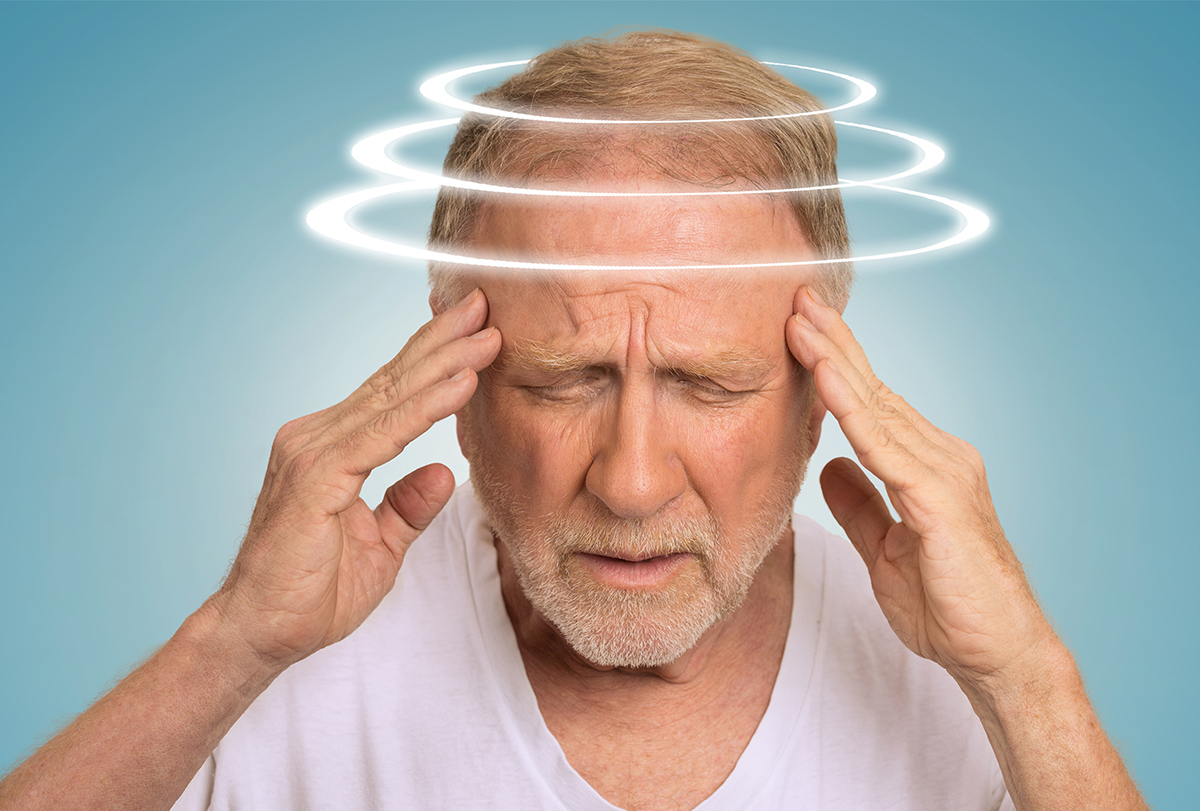
Medicines may be prescribed to treat symptoms of vertigo. Physical therapy may also help improve balance problems.
Home Remedies to Reduce Vertigo
Coupling medical treatment with natural remedies and physical maneuvers can provide better results in terms of managing vertigo symptoms. However, consult your doctor before adopting these remedies, as their effects vary among cases.
1. Perform some maneuvers
a. Epley maneuver
The Epley maneuver, in combination with medicines, is used to treat posterior canal benign paroxysmal positional vertigo (BPPV) and also prevents its recurrence. (1)
The Epley maneuver was comparatively found to be more efficient in alleviating vertigo than sham maneuver and did not have any severe adverse effects. (2)(3)
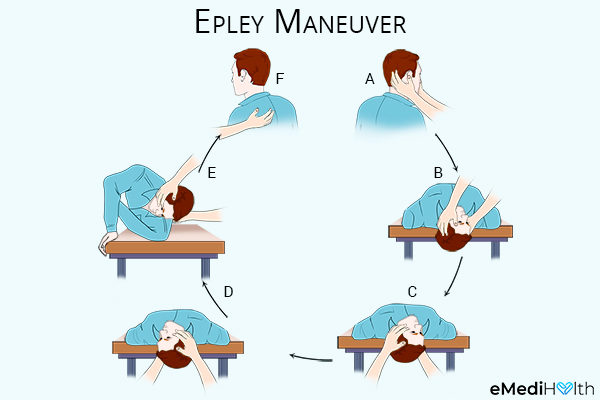
How to do the Epley maneuver:
- While sitting on the bed, put a pillow behind you.
- Turn your head to the side of the affected ear by 45°.
- Lie down while holding your head in the same position, resting your shoulders on the pillow. Your head should recline onto the bed for 30 seconds.
- Move your head 90° toward the opposite ear (without raising your head).
- Hold for 30 seconds and then roll your whole body 90° to the side of the ear that is now down.
- After 30 seconds, slowly sit up, keeping your head in a neutral position.
- Repeat the procedure three to four times daily.
b. Half somersault maneuver
The half somersault maneuver is an alternative to the Epley maneuver and is more comparatively more effective for some individuals. However, a higher number of half somersaults are needed for relief from BPPV.
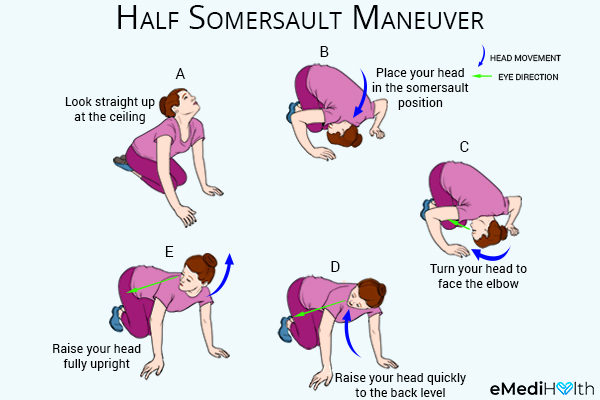
How to do the half somersault maneuver:
- Kneel on the ground and then sit back on your calves while placing your palms on the ground just ahead of your bent knees.
- Pull your back inward and tilt your neck upward to look at the ceiling. This is the starting position.
- Bring your body into the starting position of a somersault by touching the top of your head to the ground right in front of the knees.
- While staying in this somersault position, turn your head to the side that is most affected by vertigo such that you are looking at the corresponding elbow.
- Raise your turned head and the rest of the upper body, and sit back on the calves.
- Stretch your neck to lift just your head up above the body level.
- Return to your starting position.
Similar to the Epley maneuver, the half somersault maneuver may induce mild dizziness and, therefore, should be performed in a safe environment. (4)
c. Brandt-Daroff exercise
The Brandt-Daroff exercise is highly efficient for vertigo caused by labyrinthitis or BPPV, especially for those who are sensitive to repositioning maneuvers or who have had no positive effect with the other maneuvers. (5)
These exercises have no adverse repercussions and, therefore, can be performed until results are obtained.

How to do the Brandt-Daroff exercise:
- Sit upright, which will be your starting position.
- Lie down on one side with your nose pointed up at about a 45° angle.
- Stay in this position for about 30 seconds or as long as it takes for vertigo to subside before returning to the starting position.
- Repeat the same exercise on the other side.
Note: It is important that you discuss the right way to perform these exercises with your doctor before starting. Go back to your doctor if you fail to register any relief even after doing these maneuvers or if you are unable to perform them.
These maneuvers are easy-to-do exercises that can help relieve the symptoms of BPPV, but their effects are usually temporary, and the dizziness tends to come back once you stop exercising.
2. Increase your vitamin D intake
Studies reveal the association of low vitamin D levels with recurrent BPPV. (6) While vitamin D supplements may be useful for BPPV, studies are required to establish its efficacy and implementation in clinical practice. (7)(8)
Additionally, nausea and vomiting caused by vertigo may affect vitamin D absorption in the body. Therefore, it is advised to ask your medical practitioner for advice about suitable supplements.
Vitamin D is required for the absorption of calcium in the body. Therefore, a lack of vitamin D may lead to poor formation of otoliths and, eventually, to the development of BPPV.
3. Consume Ginkgo biloba
Ginkgo biloba extracts can also be used for relieving the symptoms of vertigo or dizziness. Ginkgo biloba is widely used in eastern medicine due to its antioxidant properties. (9) It may also help increase blood flow to the brain, thereby improving cognitive function.
How to use: You can prepare a therapeutic tea with Ginkgo biloba extracts or ask your doctor about starting you on a supplement.
Note: You must not take Ginkgo biloba if you are pregnant, have a preexisting bleeding disorder, or are planning to undergo surgery in the near future, as it can increase the risk of bleeding.
4. Try lemon balm
Lemon balm is a healing herb that belongs to the mint family but exudes the smell of lemon. It is credited with antispasmodic, carminative, sedative, and nervine properties, which can help with the management of vertigo.
Several animal studies have highlighted the ability of lemon balm to reduce anxiety, but clinical trials are needed to confirm these effects. By and large, this relatively mild herb is known to calm the nervous system and ease nausea, vomiting, abdominal pain, dizziness, and wheezing brought on by vertigo without any reported side effects.
How to use:
- Lemon balm is often used as an FDA-approved food flavoring in the United States and is generally well tolerated by adults.
- You may take it as a supplement, but you must speak to your doctor before using this herb medicinally for the appropriate dosage and overall suitability.
5. Consume almonds
Almonds are packed with vitamins B and E, apparently making them highly effective in vertigo treatment.
How to use:
- To prepare the remedy, soak four almonds overnight in filtered water.
- In the morning, grind them up to make a fine paste, add it to a glass of warm milk, and drink this tonic. (10)(11)
6. Use essential oils
Certain therapeutic essential oils, such as peppermint, basil, and frankincense oils, can be used for vertigo relief.
How to use:
- Massage your head with the oil and feel the vertigo being soothed away.
- If you feel weak due to the problem, get a full-body massage with an essential oil that promotes relaxation. Soak your hands in cold water before starting the massage – this helps in enhancing blood circulation, making you feel relaxed. (12)
- Try aromatherapy, wherein you add a few drops of your preferred essential oil into a diffuser and then breathe in the soothing vapors to ease your discomfort.
Caution: Essential oils are extremely potent in their original concentration and must be diluted in water or carrier oil before use.
7. Drink ginger tea
Ginger is renowned for its medicinal properties, which may prove useful in alleviating vertigo symptoms as well. It can do so by improving the blood circulation in your body and relieving nausea. However, further studies are needed to confirm these claims. (13)
How to use:
- Boil 2 cups of water in a pan, drop a few pieces of raw ginger in it, turn the heat off, and cover the pan.
- Let the ginger steep in the hot water for about 10 minutes, and then strain the tea in a cup.
- Add a few drops of honey or lemon to it for better taste.
Caution: These remedies are not properly backed with research. Therefore, despite their popularity, their usage must first be discussed with a doctor.
Alternative Therapies: Acupressure or Acupuncture
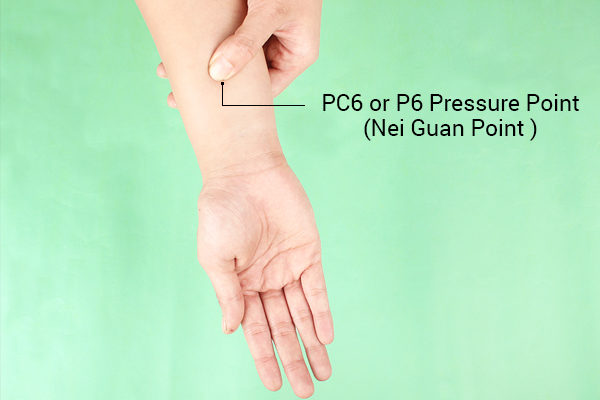
Traditional Chinese therapies may also help relieve vertigo symptoms by pressurizing and stimulating certain key points on the body using your fingers, needles, or other tools.
Acupressure is a safe and inexpensive technique for managing vertigo caused by Meniere’s disease. It involves pressing certain points of the body with your fingers or a spoon to stimulate blood circulation and alleviate various discomforts.
Acupuncture is a slightly more invasive version of acupressure in which needles are pricked into the pressure points. While anyone can learn how to stimulate their acupoints with their fingers, inserting needles is a risky procedure and requires the skilled expertise of an acupuncturist.
To alleviate vertigo, the P6 pressure point (PC6), also known as the Nei Guan point, is targeted. This acupoint lies between the tendons of the mid wrist, at a distance of two thumbs width from the largest crease at the end of your palm. (14)(15)(16)
The pressure is generally applied to this acupoint to reduce motion sickness, dizziness, headaches, nausea, upset stomach, and carpal tunnel syndrome.
Note: You must consult your doctor before trying any of these techniques.
Preventive Self-Care Tips
The following self-care measures can help in alleviating the symptoms of vertigo or preventing a vertigo episode:
- Elevate your head with extra pillows when sleeping.
- Avoid straining your neck and try to keep it relaxed.
- Upon waking up in the morning, avoid getting out of bed quickly. Instead, gently sit up slowly and then sit on the bedside for a couple of minutes before standing.
- Refrain from bending over repetitively. For example, if you need to pick something up from the floor, bend your hips and knees instead of bending from your waist.
- Avoid standing for long periods, and carry a chair or stool when going outdoors.
- A cane can be used to help maintain body balance.
- Train your brain by performing the exercises provided by your doctor or balance therapist.
- Sit still or lie down during an acute episode.
- Avoid loud music, crowded places, and bright lights, as these can easily trigger symptoms, especially if you have vestibular migraine and anxiety disorders.
- Refrain from straining your eyes by limiting reading and screen time. Do not read when experiencing vertigo symptoms.
- Consume more water throughout the day, especially when dizzy, to prevent dehydration.
- Refrain from consuming caffeine, tobacco, and alcohol, as these can worsen the symptoms and are also harmful to general health.
- Be cautious about driving if you had vertigo episodes in the recent past, as an attack during driving is possible and could lead to an accident.
- Practice yoga to improve your balance, movement, focus, and coordination. This exercise can also help in reducing dizziness. Yoga should be performed under expert supervision initially.
- Control dizziness by practicing breathing techniques and other relaxation exercises. Try to use medications sparingly and for the shortest period possible.
- Ensure plenty of sleep as it is important for healing. Severe fatigue worsens the symptoms.
Most-Asked Questions About Vertigo
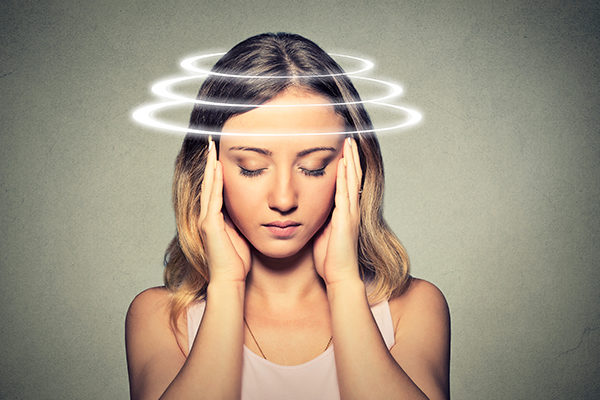
Are there foods to avoid in vertigo?
Vertigo is common in old age as the lean body mass decreases and hormonal, and cytokine levels get disturbed. Therefore, food readjustment, along with other therapies, can help maintain the life quality of elderly patients. (17)
Avoiding high-sugar or salt-containing foods and beverages may help. It is essential to maintain consistency in the diet and consume food having complex sugars rather than simple sugars.
Is the fear of heights the same as vertigo?
A dizzy feeling when looking down from a high place is known as a fear of heights or acrophobia. While it is often confused with vertigo, they are not the same conditions.
Can the common cold lead to vertigo?
There is no direct association between vertigo and the common cold. However, if a virus spreads from the respiratory tract into the inner ear, inflammation of the inner ear (labyrinthitis) may ensue, which is a prevalent cause of vertigo.
How does lightheadedness differ from vertigo?
Lightheadedness is the sensation of fainting and dizziness and does not involve any of the feelings of true vertigo such as tilting, falling, whirling, or spinning. However, both conditions may be experienced at the same time. Lightheadedness generally results from sickness, medications, anxiety, allergies, etc.
Is vertigo a lifelong condition?
Vertigo is rarely prolonged and can be alleviated with the help of self-care measures and medical intervention.
Can vertigo occur during sleep?
Sleeping in an incorrect position may induce vertigo. Additionally, a lack of sleep might increase the severity and frequency of the episodes, while regular restful sleep provides relief. Dizziness and vertigo are also more common in individuals with sleep apnea.
Final Word
Vertigo generally resolves on its own. However, taking measures such as managing stress can help reduce the symptoms of vertigo. Additionally, counseling, behavioral therapies, and balancing exercises can aid in the treatment.

- Was this article helpful?
- YES, THANKS!NOT REALLY



